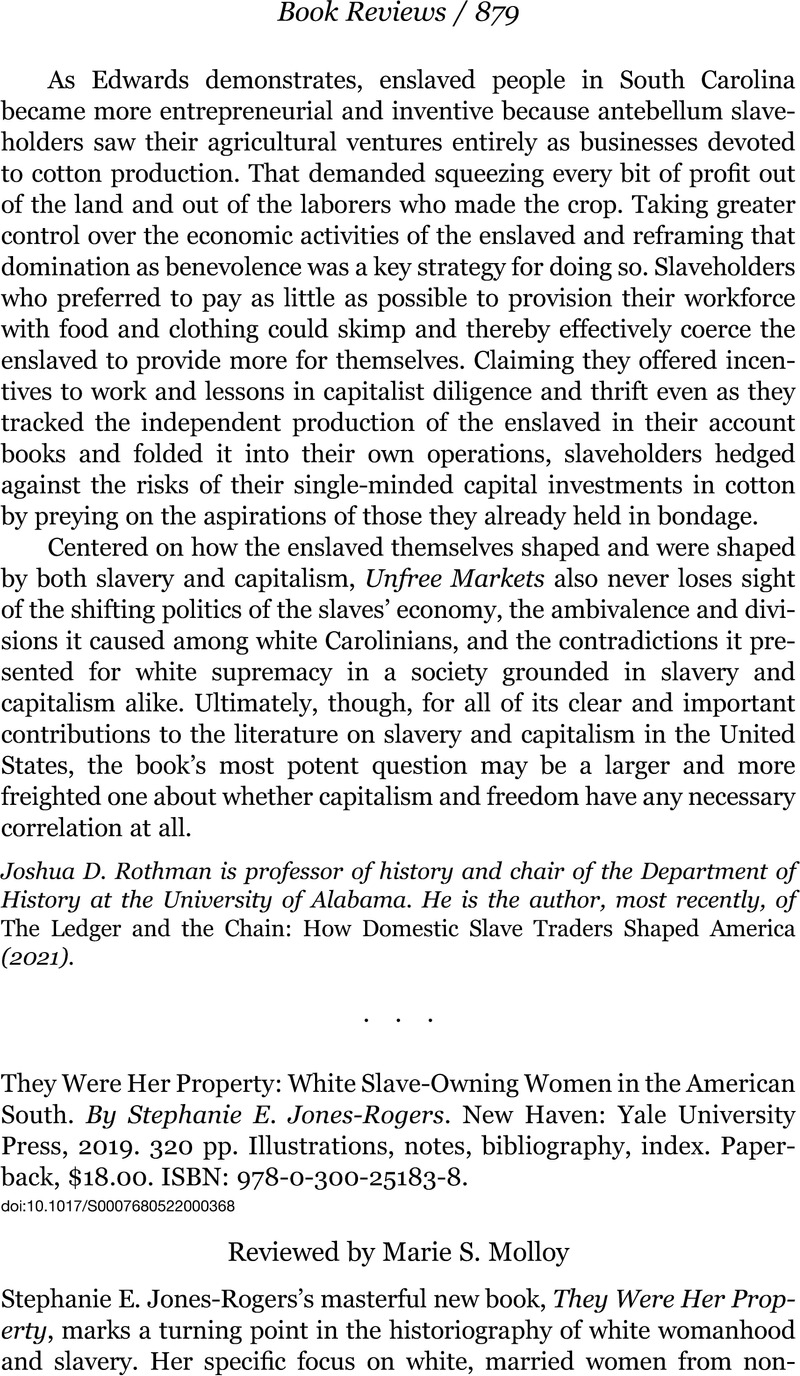No CrossRef data available.
Article contents
They Were Her Property: White Slave-Owning Women in the American South. By Stephanie E. Jones-Rogers. New Haven: Yale University Press, 2019. 320 pp. Illustrations, notes, bibliography, index. Paperback, $18.00. ISBN: 978-0-300-25183-8.
Review products
They Were Her Property: White Slave-Owning Women in the American South. By Stephanie E. Jones-Rogers. New Haven: Yale University Press, 2019. 320 pp. Illustrations, notes, bibliography, index. Paperback, $18.00. ISBN: 978-0-300-25183-8.
Published online by Cambridge University Press: 08 February 2023
Abstract
An abstract is not available for this content so a preview has been provided. Please use the Get access link above for information on how to access this content.

- Type
- Book Review
- Information
- Copyright
- Copyright © 2023 The President and Fellows of Harvard College


